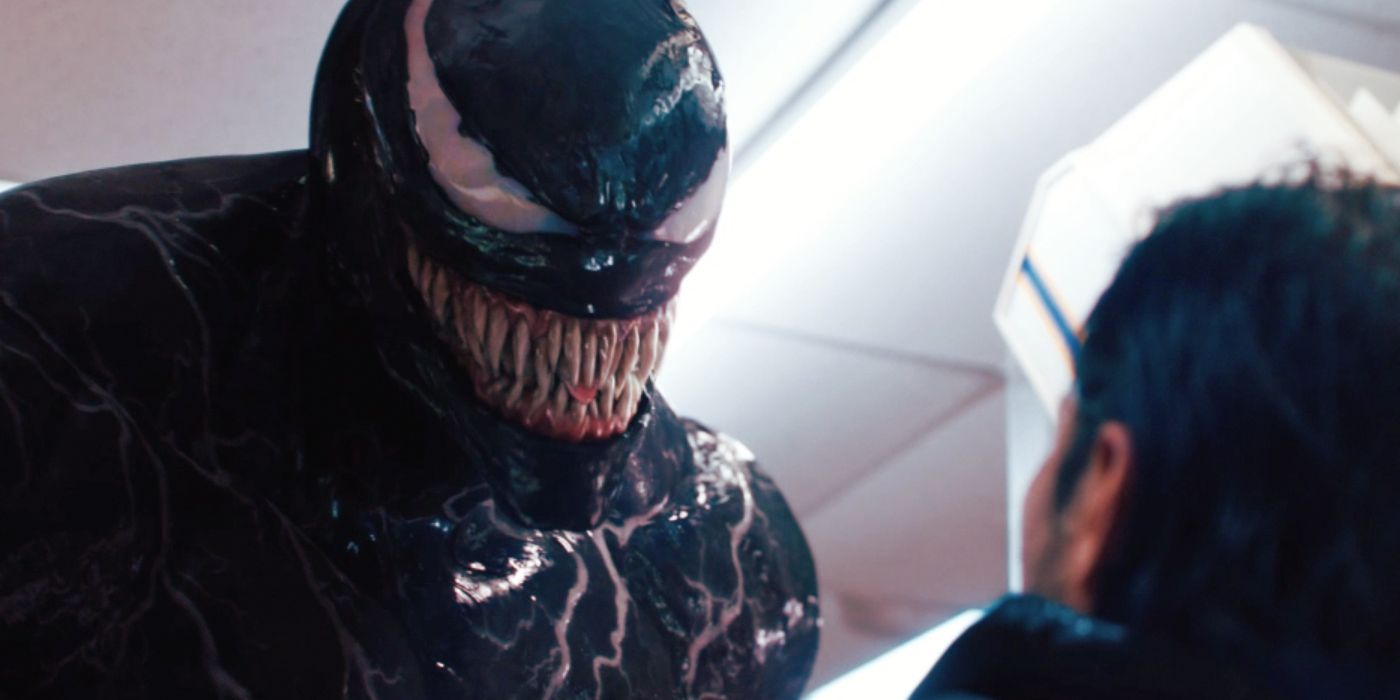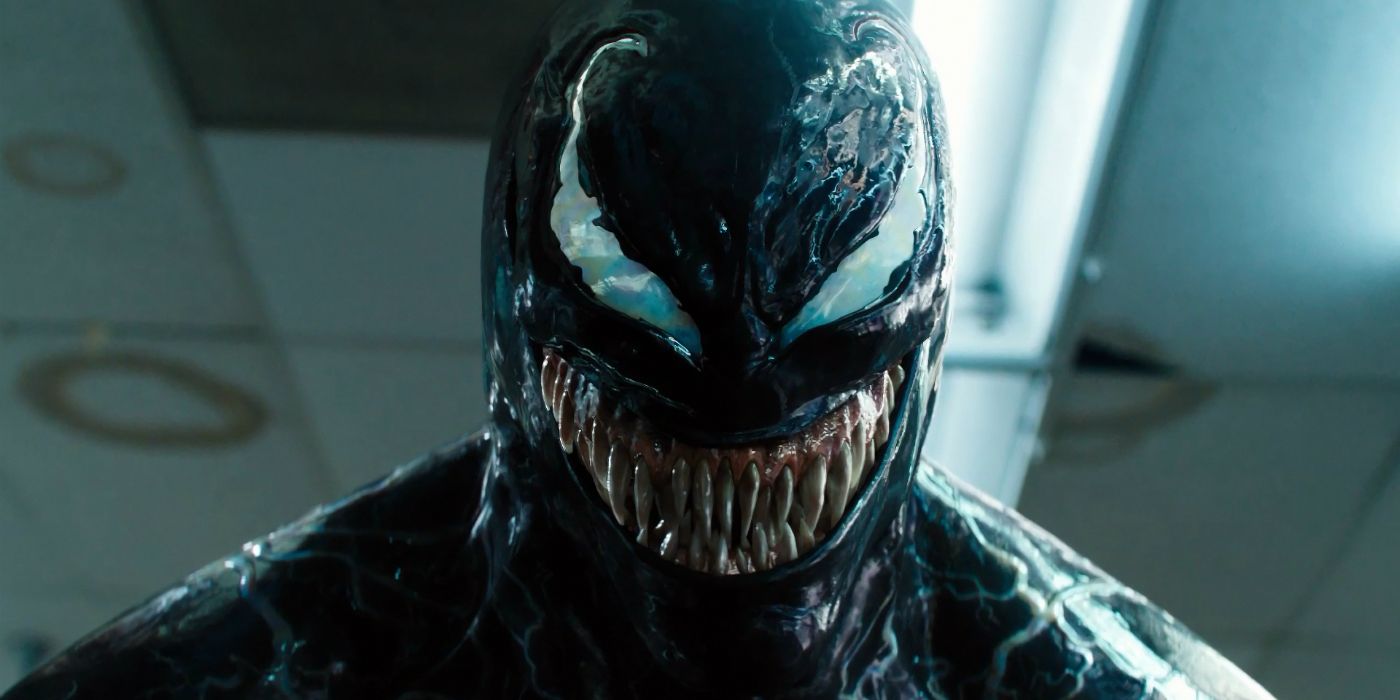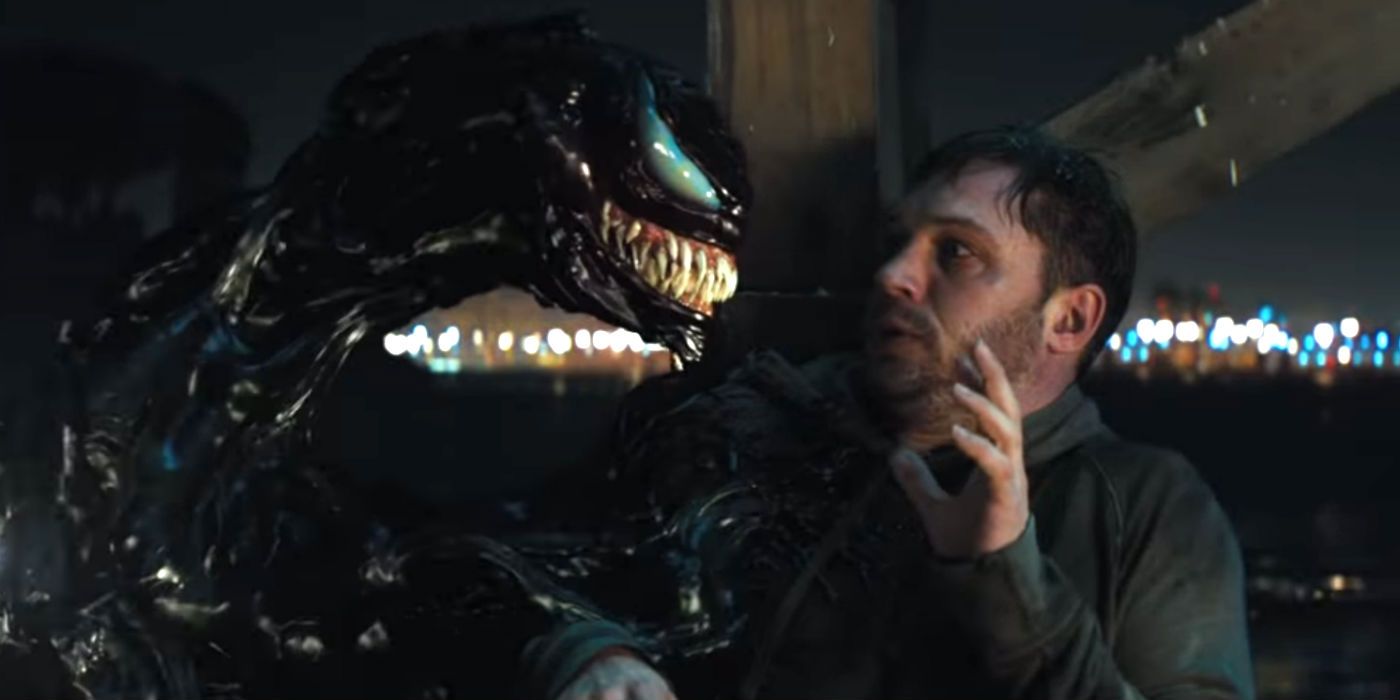There was a lot that Venom had to get right, but perhaps the trickiest task was creating the symbiote anti-hero himself. The titular character has been reimagined many times across the comics, cartoons and even on screen in Spider-Man 3, and the pressure was on to do all that justice.
Key to this was Paul Franklin, Venom's VFX supervisor. Franklin has worked on many big-budget productions - most notably Christopher Nolan's Dark Knight Trilogy, Inception and Interstellar - but his recent release posed unique challenges - from the lack of Spider-Man to Tom Hardy's improv. For the release of Venom on home video (available now on digital, 4K, Blu-ray and DVD), Screen Rant caught up with Franklin to discuss creating the VFX of one of the biggest movies of the year.
Venom is incredibly successful. Did you expect this level of success from the film when you were working on it?
You always hope for the best when you start making a film, hope it will find an audience. But you don't really know until you've actually finished the thing. And obviously, we had a lot of ingredients going into the mix that were very promising. It's a well-established character in the comics world, a very passionate fanbase who really want to see this character, and there'd been talk about a Venom film for so many years, so there's a lot of expectation sitting on your shoulders to bring it to the screen. But also when you're trying to do something a little bit different... Venom stands apart from a lot of the other comic book films out there. It has its own, distinct flavor, which is very much the vision of Ruben Fleischer and Avi Arad and Matt Tolmach, you've gotta go into this with a little bit of your fingers crossed. But the thing that really made me realized that we had a potential hit on our hands was that, when we put on the crew screenings and I took my kids to see it, at the end of the movie I asked them what they thought. Normally, if they don't like a film, they just tell me how good my visual effects are, because they're just basically trying to say, "Dad, we're trying to make you feel better about it." And they just loved it. They had great big grins on their faces. My daughter, she's a teenager, she said: "I'm going to get all my friends to go and see this." That hasn't happened too often with the films that I've made. And it's not that I haven't worked on... obviously, I've worked on some really good films, but they often appeal to a different kind of audience. You could see it's going to take off. So when we saw the opening weekend numbers, we just thought, "Oh wow, this really has found an audience." There's an audience out there that's looking for something a little bit different, and I think that's what we gave them.
You talk about your previous movies. Stylistically this has been compared to The Dark Knight Trilogy. It's got a different tone but in terms of the visual stylings and mood, it owes something to those movies. How did it compare as a job?
Every filmmaker has their own approach to creating their film. Obviously some commonalities in the way that the business is structured, the process that we go through, there's a lot of things in common. That's how you become a film professional - you do enough of these things, you know what the programmes going to be. Reuben wanted to make this grounded in that he wanted it to feel it was in a version of the real world that we understand, that we know. He was very keen that we go shoot in the Tenderloin in San Francisco, where Eddie's supposed to live in the film. We shot as much of this film on location as possible. There is stage work, but it's mostly on location out in the real world. We do have moments that go into full CG world, particularly the end of the film during the final battle between Riot and Venom, but even that is a CG recreation of a real place - it's Point Bonita in Marin County just north of San Francisco. So everything has this grounded aspect to it. And, of course, you have a genius cinematographer in Matthew Libatique, who's worked on some of the most amazing films of recent years. He's done such amazing work with Darren Aronofsky, he shot A Star is Born as well - he had the number 1 and 2 films in the same week. And that brings a sensibility to the film that you can then build on as a visual effects artist.
I think for me what always works best is when we're capturing as much reality with the camera as possible, and then we are using the digital tools to build on, extend and enhance that. So whenever we have Venom in a real-world environment, we shot that in a real set or real location, we had stand-ins to make sure our camera was framed properly, and something for the cast to react to. That makes a huge difference to the way the film turned out. There are commonalities to them, but at the same time, it's a very different film.
The key reference that Reuben gave me at the beginning of this film, when we started working on this was the old John Landis film, An American Werewolf in London. It's a horror film but also has strong elements of humor and is a film about a process of transformation, about the guy becoming a werewolf. And so that was where we were coming from. So you can think of it that. 21st Century, comic book, state-of-the-art update of American Werewolf in some respects.
That American Werewolf stuff comes across, but it's very much its own thing. Take the way that you did the symbiote transformation - how it moves on its own, how it attacks different people. How did that tendril side to things come about? That's quite different to how they do it in the comics but it works so well on the screen.
I think we started on... the visual reference point was indeed the comics. But where the comics left off is where we needed to begin. The comics, for all their brilliance, they're essentially a stylised, abstracted version of reality. We needed to take it to the next step, we needed to add all the extra detail to it which would make you think it was real and not just a drawing. So we, the level of detail and sophistication of what's going on is turned up several levels to give that sort of organic level of detail that you feel you're looking at a living, breathing creature, some sort of biological process is going on. We spent a lot of time looking at real-world reference like undersea creatures, jellyfish, deep sea creatures, squid, octopi. We also looked at things like slime molds, these extraordinary time-lapse films in nature programs of fungi and slime molds consuming detirtus on the forest floor which have an almost sentience to them - they appear to be directed, they're not just a random growth process. And all of those ideas fed into it.
We also knew we'd have some scrutiny on this, you were going to be looking at it so long in terms of screentime. We needed to give enough detail that you couldn't just settle on one part of it and figure out what was going on. So it's always giving you something new to look at moment-to-moment in the shots, and then we let the effects process find its own way. And what I mean by that is that we didn't just press a button and let the computers run off and do it because, frankly, when you do that, the computers don't do anything. It was the effects artists on a day-to-day basis who were finding new, more extraordinary things with the toolsets they'd created and they were offering possibilities and ideas that I'd never even considered. "Well," we thought, "That's cool, we've not seen that before. That really gets to the heart of our story that we're trying to tell, let's bring it in the film." So we offered that up to Reuben and the producers, and they loved what we were doing, so that gave us the confidence to carry and create something people found a little bit different.
You're talking about what you brought to the project. One of the things that fascinated me about Venom was the amount of improvisation that Tom Hardy was able to do, how involved he got into the character. That obviously is very challenging for something as regimented as VFX. Did Tom's acting pose any unique challenges?
Tom's improv on set and how he created the character day-to-day was essential to the character you see on the screen. Because not only is he Eddie Brock, he's Venom - he's performing Venom. That dialogue you hear, we had that on the set. We would pre-record that and he'd have it playing back in a little earpiece. And quite often he was coming up with those lines, he was working with the writer, with Kelly Marcel on set. And he'd record those lines with our sound mixer in his trailer before coming onto set and then we'd hear them for the first time with everybody else. So what we had to do was say, well, we're going to have to embrace this. We can't force this guy, we can't force this artist to follow our script. You know, our prescription for how this thing should be done. We need to embrace this because that's where the magic is and I think that's what people are responding to - Tom's performance as Eddie, Tom's performance as Venom. And capturing that, keeping that in the visual effects was super duper important.
The way that we did that is that rather than go for, say, a motion-capture process where you've got tracking markers all over the character, we built a system where we have what's called witness cameras which are multiple physical cameras on the set recording Tom at different angles so that later on we can put this all together and figure out what he was doing in three-dimensional space to then be able to attach the visual effects to him and use that as a starting point to jump off of. So when we eventually become full digital Venom, we know where we're going - or at least we know where we're starting from, and then we can find our way from there.
We've talked a lot about what was brought to the film. There's obviously something that's missing - Spider-Man. The movie doesn't really suffer from not having Venom's origin character, but I imagine in creating this character must have been tricky not having one of his fundamental aspects - the Spider symbol, the web-swinging. At what point did you have divorce yourself from those aspects?
Right from the beginning, it was very, very clear to us that this was the way we were going, a standalone origin version of the character. We looked, obviously, at the comic books, and comic books can get you so far in terms in references to what the character's going to do. We had to figure out, for instance, his white chest pattern, because you couldn't just leave him as an all-black character - the black-and-white aspect of Venom is very important. And we spent a lot of time figuring out, well, are there are stylized shapes and patterns we can use, something suggestive of the character's heritage? Or do we need to start from scratch and think of something new? And it was actually Avi Arad, one of our producers. Avi's been involved in Marvel films since the beginning of the process, for many many years, and he is intimately aquainted with the charcater - he loves Venom, Avi's all about Venom. And he said to me, "Look, you're creating the symbiote." We'd been making the raw symbiote, which is this very vascular, organic, amoeba-like creature that you see at the beginning of the film which has this veinous structure on its surface. And he said, "Well, we're making the veins there, and Venom is this huge, muscular dude. So how about we do something that's a bit like that the veins pop out of a bodybuilder's chest?" You think about young Arnold Schwarzenegger or Lou Ferigno in his prime, when they're all puffed up and the blood's running through their veins and they're standing out like thick ropes across their physique, how about something like that, so we say that this is an integral part? It's not just a color, it's not just a surface pattern. It's something which is deeply organically part of him, and then relates to the symbiote. And once Avi had said that, I could see a way forward, a way that we could do this. We wanted to still keep the sense of graphic stylization, so the pattern is roughly symmetircal and if you look at Venom, there's a very subtle "V" shape - V for Venom - on his chest. There is a graphic aspect to it, but it becomes its own thing. And I think it spoke very much to the nature of the creature we were creating. So having the freedom to be able to do that, being empowered by the filmmakers to go away and do that and take that risk in such an iconic property, that was pretty liberating.
I think ultimately, the reason the film succeeds without having all of the other stuff in it, is the strength of Tom Hardy's central performance and the storytelling that's going on there, that we're all part of that process and that's why the film works.



